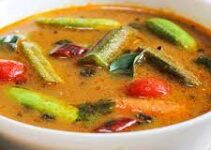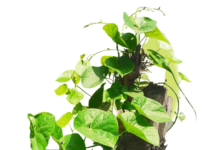What are millet grains?
Millets are coarse grains that have been traditionally grown and consumed all over the world for the last 5000 years. Millets are nutritionally adequate and one of the most superior cereal grains. They are small-seeded cereal grains widely grown in drier parts of the world. They are highly drought-resistant and have been cultivated for thousands of years in many parts of the world. They are considered a staple food in many developing countries and are considered to be a nutritious alternative to other grains such as wheat and rice. Millets Millets are savoury and delicious. The recipes are widely recommended by various chefs, too.

Image credit: themom100.com
Nutritional value of millets
Millets are an essential food source, particularly in developing countries. They have very high nutritional value and are rich in d micronutrients such as proteins, vitamins, and minerals. They have high fibre content and low glycemic index, which means the body slowly absorbs them and does not cause a rapid spike in blood sugar levels. They are gluten-free proteins. They are rich in bioactive compounds, which make them superior-excellent food. They also contain minerals such as Iron, Calcium, Magnesium, Zinc, and Phosphorus, which are important in maintaining good health. They also have B complex vitamins, essential for maintaining energy levels and a healthy nervous system—one of the millet’s most valuable nutritional benefits is high fibre content. Fibre is necessary for a healthy digestive system and helps lower cholesterol levels and prevention. Millets are a good source of complex carbohydrates, which provide a slow release of energy and help regulate blood sugar levels as they take more time to digest and absorb, so it does not cause the blood glucose spike—so introducing millet into the diet controlling Diabetes as it does not increase the blood glucose level.
8 Amazing recipes for millets
Millet Porridge
- Cook millet until it has become soft.
- Add sweeteners like honey or maple syrup, topping, and nuts.
Millet Salad
- Cook millets in water until they become theft.
- Top with chopped vegetables, such as bell peppers, tomatoes, and zucchini. And Add a dressing made from olive oil, lemon juice, and herbs,
Assorted Millets
- Sauté onion, celery, carrot, and beans in a and an.
- Add millets and millet till. It is lightly toasted.
- Add broth and bring to a boil.
- Reduce heat and simmer, covered, until millet is tender and liquid gets absorbed
- Serve hot.
Millet Risotto
- Sauté chopped mushrooms and onions in butter or oil.
- Add cooked millet and stir in stock and grated Parmesan cheese.
- Cook until creamy and serve hot.
Millet Idli
- Soak millet, urad dal, and fenugreek seeds for 3-4 hours.
- Grind the soaked ingredients to a fine batter and delicate salt to taste. Ferment the batter for 6-8 hours.
- Steam the batter in idli moulds.
- Serve mould with coconut chutney and sambar.
Bajra Roti
- Mix bajra flour, salt, and water to form dough.
- Divide the dough into small balls and roll them into thin chapattis.
- Cook chapattis on hot tawa until they are golden brown from both sides.
- Serve hot with butter.
Bajra Khichdi
- Cook Bajra and wash moong dal in a washer cooker with water and salt.
- Once cooked, add vegetables of your choice, such as peas, carrots, ts, and beans.
- Finally, add some ghee tempe, red with cumin, and mustard seeds.
- Serve hot with yogurt.
Jowar Upma
- Dry roast jowar in a pan until it turns golden brown.
- In a separate pan, temper mustard seeds, cumin seeds, and curry leaves. Add chopped vegetables and sauté for a few minutes. Finally, add the roasted jowar until soft. Serve hot with chutney.




